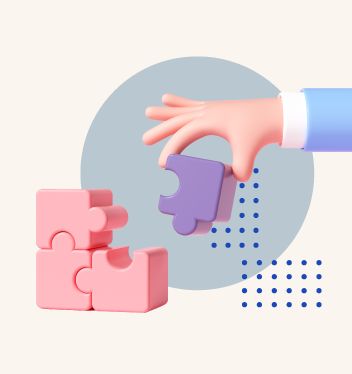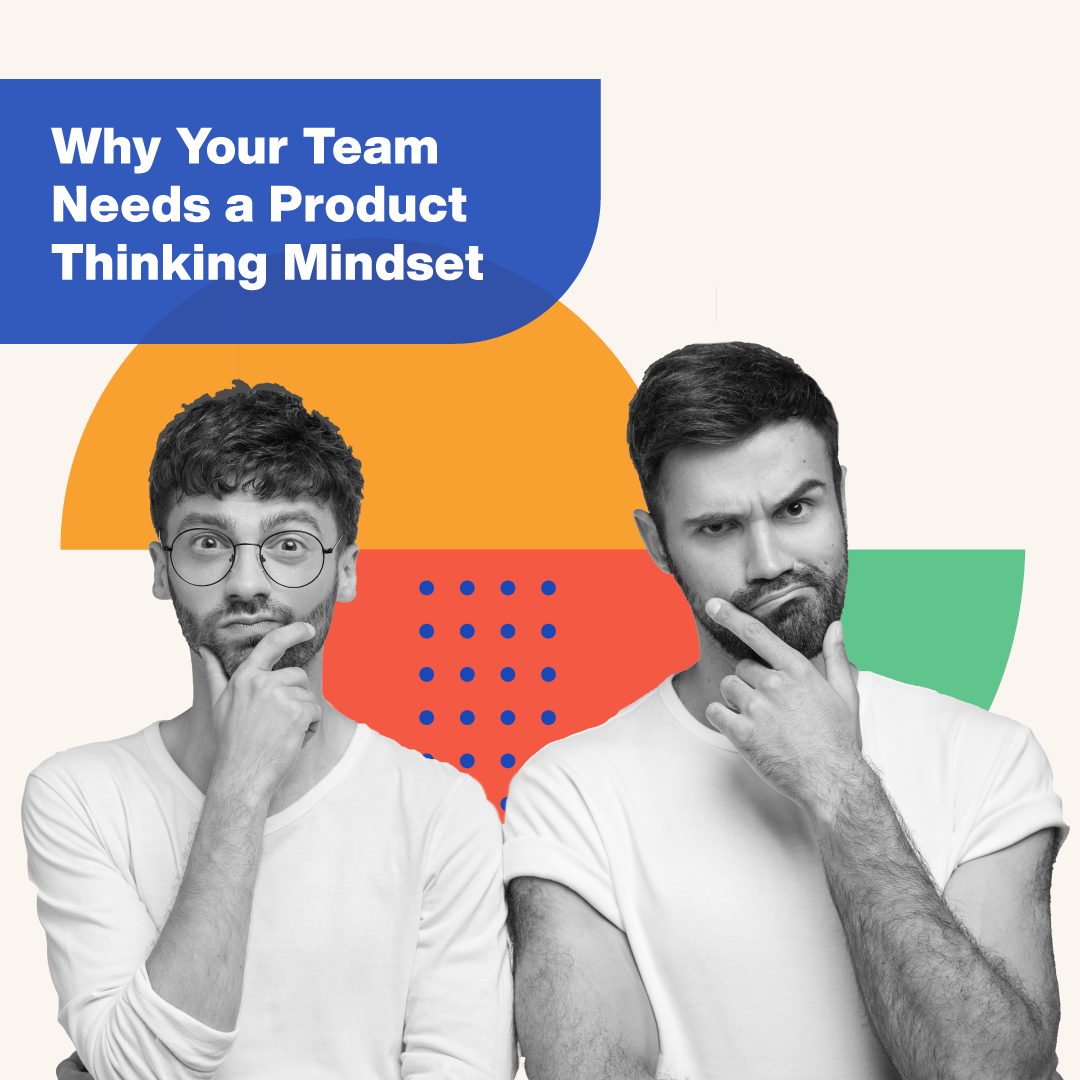This blog on UX/UI Design is a great starting point if you’re exploring not just how to study UX and UI design in-depth but also grasp the most effective way to position yourself in the job market.
If you think back to your childhood you were probably asked this one question repeatedly: ‘What do you want to be when you grow up?’ There’s research now that says this might not be the most helpful question to ask kids.
But as we get older, we start to ask this question of ourselves because we know now that the possibilities are pretty much endless and go way beyond the standard “doctor, teacher, fireman” answer we learned in first grade!
Maybe you’ve told yourself you want to work towards becoming a UX/UI designer? The fact that you’re here reading this means that you’ve taken a solid first step. But there’s no pressure! This guide is meant to simply organise your thoughts around what a career path or career change to UX/UI design might look like. That’s the beauty of living in this internet era.
We will update this guide regularly – for now, let’s dive right in!
1. The basics of UX/UI design
Let’s address some of the core questions that might be on your mind:
What is UX design?
Ahhh. User Experience design! Here’s the thing: whatever experience you’re designing for already exists for the user. What UX design does is that it makes that existing experience (with a product or service) even better. You do this by looking at the end user’s habits and behaviours, and any patterns in them, to make their experience as useful and desirable to them. We might all have been introduced to the Experience Economy “way back” in 1998, but the premise still very much exists today. Experience matters!
What is UI design?
When it comes to User Interface design, we’re talking about the access points where users will actually interact with designs. Whether it’s a visual interface (e.g. mobile, desktop), voice-controlled interface (e.g. Siri, Alexa), or gesture-controlled (e.g. virtual reality), UI design is the building of interfaces based on design. You might say that the UI design is what the user is first introduced to. And you definitely want to make a good first impression, right?
What is the difference between UX design and UI design?
Simply put, UI design falls under UX design. This is because the user experience is about the entire journey, from start to finish, of interacting with a product or service. On the other hand, user interface is about the interaction between the user and the layout (i.e., elements and cues) of the product or service. Therefore UI design is a subset of UX design and often paired together.
Who do UX/UI designers work closely with?
Whether you choose to become a UX designer, UI designer, or UX/UI designer, your work will not be done in a silo. That would actually go against everything the role stands for. In fact, UX/UI designers end up touching many parts of the organisation for the sheer fact that everyone has a common goal: to please the end user. So, on any given day, you will work closely with product managers, developers, quality assurance engineers, and more. You’ll even work with copywriters – even micro-copy on buttons and CTAs factor into the user experience! Teamwork makes the dream work!
Why should you become a UX/UI designer?

If you, like Whitney Hess, UX Strategist and Founder of Vicarious Partners, Inc., consider yourself someone who’s empathic then this is one of the most rewarding benefits of becoming a UX/UI designer. You’ll have a direct impact on people’s lives – both the end users and the companies you work for – not to mention the high demand for solid UX/UI designers all over the world!
When should you choose a career in UX/UI design?
Care to take a guess? The answer: now! Wherever you are in your career path, it’s more than possible to start today. There will be lots of self-learning at first, so you’ll have to have an entrepreneurial spirit in that way, but the great news is that organisations like ours can help you up your skills game with university-accredited certificates. And if that’s too big a commitment, we run 10 and 12 week shorter courses.

2. Design tools you should get to know
Here’s the catch: the tools are constantly changing. We’re living in an era where we are never at a loss for choices when it comes to design tools (or any tool for that matter).
It’s tricky to try and name the “must-have-tools” UX designers use as the industry is constantly evolving and what was popular a year ago might be obsolete in a month.
For example, Figma is used by the majority of designers whereas InVision is pretty much ‘dead’ despite its success just a few years ago. Acquiring a flexible mindset around tools is our recommendation!
Familiarize yourself with a select few, depending on their use (e.g. wireframing, prototyping, collaboration, mockups, etc.), and stay up-to-date with industry trends where possible. You’ll be glad you did once the time comes to start building your portfolio and looking for your perfect match when you’re researching companies to work for later!
As an aside, don’t forget to sketch! You don’t have to be a natural born artist to put a design on paper – this is about getting out the ideas and flows you might have in your head. A writer writes, but a designer should get comfortable with sketching on the go. Even Farai Madzima, UX Lead at Shopify, agrees with us:

3. How to get started
If you’ve made it this far down the page, then you’re already off to a superb start!
Read something about design every day
Now, you might have a writer friend or acquaintance in your circle. If not, then you’re still probably familiar with the advice all writers give: read! This applies to designers as well. Keeping up with the news and shake-ups both big and small in the design world is key to strengthening your knowledge base and know-how. You can start with a feed like Webdesigner News or choose articles on Medium. The important thing is starting somewhere.
Seek and find inspiration in design, daily
While you’re doing all your marvellous design-related note-taking, you might want to start your own designs. If you’re lucky, you’ll find designers that inspire you. Both will help you develop a keener eye for design. You’ll feel your brain embraces or rejects designs faster, which will help you shape your own aesthetics.
Finding yourself at home in communities like Dribbble or hanging out in libraries like Screenlane will not only train your eye but also help you feel part of a group of people with similar passions.
Learn about the principles and fundamentals of design
There’s a process to everything in life, and that goes for design as well. Principles such as colour, balance, contrast and typography, etc. will allow you to carry consistency through your designs. Why? Because you’ll need that consistency in every creative process you find yourself starting. It always starts with solid research, because you can never go wrong with gathering as much information before ideation.
Practice on your own
Way before you ever land your first project, nothing’s stopping you from working on your own. Whether it’s your own app idea or a mock-up/makeover of an existing app, you can dive right into UX/UI design yourself and test the waters. You can even practice “pitching” your designs to get a taste of what it takes to ship designs. If you have designer friends or developer friends then all the better. Now’s not the time to be shy. Learn by doing. As Skills Union CEO Colin Mansell says: “People ultimately learn from people, and in the case of learning digital skills, there is no better way to learn than by doing.”
Ask for help
Back to this idea of “designer friends”… if you’re lucky enough to know someone who’s already working in UX/UI design, then take the plunge and ask them if they’d review your work. Maybe asking them to be your mentor will feel too intimidating, but asking for feedback and receiving critique well is the best learning curve you’ll take on your journey. Nobody becomes an expert overnight, and certainly not when it comes to design. The experts of today? They too were novices when they started out. Take it from Jane Pyle, User Experience Lead at Genentech, Inc.:

Once you’ve got a solid foundation of knowledge you can then delve into researching courses on offer (like the accredited ones that Skills Union offers on a part-time basis).
4. Your future in UX/UI design
With close to 7,000 SaaS companies in the marketing industry alone, the demand for UX/UI designers does not look like it will decrease anytime soon. So, what can you do to prepare for your future as a UX/UI designer?
Build your portfolio
When we said “practice on your own” we meant it! “Faux” projects, where you showcase your research and design processes (and your skills) can result in an impressive foundational portfolio. After all, you just need a place to show who you are and tell the story of how far you’ve come in your UX career. Most employers are more interested in your creative thought process than anything else.

It’s up to you the format you choose (e.g. website portfolio, PDF document). There’s nothing like the feeling of getting your designs organised in one place to share with the world. The best part is that you’ll be able to add to it as your experience grows. What you believed to be a “weak” portfolio to start will only get stronger with time.
Level up your learning
We can’t stress enough the importance of helping yourself so you can help others. In the world of UX/UI design, the magic is in the moments where designers serve as mentors and mentees in an endless cycle of collaboration. It’s why it’s so important to continue to learn and improve so you can evolve and raise the bar with your fellow designers.
In that respect, our team at Skills Union considers ourselves very lucky that we get to offer new and budding designers out there multiple ways to learn. If you’re curious about a career in UX/UI design explore our shorter learning sprints and UX Product Management longer programme. Our coaches and advisors are standing by to inspire you!







